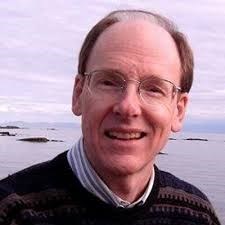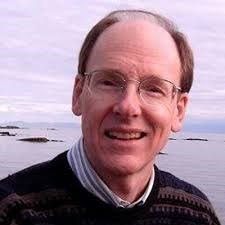For many people, the word āspiritualā can touch something uncomfortable inside. If thatās your experience, let me first offer an idea that may help put you more at ease.
For me, spiritual refers to the non-physical part of every human being. All those essential aspects of ourselves that cannot be touched: our thoughts, feelings and emotions; our beliefs, attitudes and perceptions. It is the awe we feel at a beautiful sunset; the love that wells up when we look at a new-born baby; our spontaneous joy when seeing someone do something good for somebody else.
It is also more than that. Itās that aspect of being human ā call it energy or consciousness ā which connects us, at a deeper level, with others and the rest of life. Some of us experience this in nature, or through prayer and meditation; when giving to others, or simply looking up at the cosmos (or a lunar eclipse) on a starry night. Itās a knowing and experience that we are part of something more.
So hereās the question: How can we use this āspiritualā awareness, of who and what we are, to create more āhealing changeā in our lives, our work and our world?
In my last two articles (, ), I described how the two sides of human nature ā our light and dark sides (or true and false selves) ā guide our thinking and behaviour. Here I want to explore how these mindsets also affect the āchangeā we try to make in our lives, and the unexpected outcomes we get as a result.
How Do We Create Change?
As a āchild of the sixties,ā Iāve known a lot of people who have worked for environmental, social and political change. Each one did so with high ideals and positive motivation to make the world a better place. They did their best to raise awareness of the problems, and solutions, and encourage action across a wide range of issues ā Ģżfrom garbage to energy conservation, poverty, AIDS, alternative health and world peace. So what happened?
Sometimes, people heard the message and decided to change. As a result, the progress weāve made across society on all these issues has been significant. However, when politicians, civil servants, business leaders or the public »å¾±»å²Ōāt act the way we wanted, we often felt frustrated and tried āpushing for changeā even harder. We began telling people how they should act, and often used fear or guilt to motivate them. If that wasnāt enough, we applied still more pressure. We pushed governments through write-in campaigns, protests, demonstrations and the media. We pressured companies through economic measures such as boycotts or public shaming. The more people »å¾±»å²Ōāt do what we thought was right, the more aggressive we tended to become.
Why? Because thatās āhow we create change.ā When what youāre doing doesnāt work, push harder. And if the positive approach doesnāt work, go negative. You may not want to, and people might not like it, but thatās what you have to do. Everyone knows that. And as a result, we end up using pressure, anger, force or manipulation to get others to change.
°Ā±šāv±š all done it:Ģż in relationships, as parents, or with others in business. In fact, people have done this for thousands of years, in politics, social change, religion and the military. Itās a standard part of being human. When people donāt do what we want, we āpushā them to act differently.
The question is, how well does this approach actually work?
The Past 50 Years
Looking back at the last 50 years of environmental change, the results are definitely mixed. Significant progress has been made in many different areas: Ģżfrom the creation of environment departments to government legislation on environmental issues; from widespread reductions in air and water pollution, acid rain and whaling to advancements in recycling, reforestation and protection of the ozone layer, to name but a few.
Yet if you talk with someone knowledgeable about the environment, these changes donāt seem to be nearly enough. Our problems have continued growing faster than the solutions weāve created. So, too, have our frustration, desperation and concern for the future, as the changes we believe are still needed have not yet happened.
Whatās been less obvious, but also growing, is the social backlash thatās occurred. Many people are increasingly resistant to change, whether itās to carbon taxes, more money for public transit or reducing climate change; increasing affordable housing, changing our voting system, or settling First Nations land claims. The āDonāt tell me what to doā mindset in society is growing as well.
Many people today are feeling scared about their security, threatened by the chaos in our world, and tired of being pushed to change. And they are now pushing back. Their anger and frustration can be seen in many places, from āFord Nationā (a reference to the election of Rob Ford as mayor of Toronto in 2010) to the spread of the Tea Party and election of Donald Trump in the U.S. Around the world, thereās been a widening of political and societal divisions ā with increased polarization of views, growing rancour, and less willingness to hear, consider and work with opponents.
Reflecting on Our Approach... and Results
Several decades ago, I felt these kinds of conflicts growing in my own life. I also began noticing that our āwork for changeā often wasnāt working, and began to ask: Why havenāt we been more effective in creating the progress we hoped for? Itās only more recently that I began to grasp what some of the deeper reasons may be behind this. And in my next article, Iāll do my best to articulate why...
Coming on Saturday: Why arenāt we more effective in creating change?
 Eric Hellman is a communications coach and change consultant. Co-founder of the worldās first Blue Box recycling program, and consulting author of the bestseller, Leadership from Within, his newest work is called Conscious Change. For more information, see Ģżor contact him at [email protected].
Eric Hellman is a communications coach and change consultant. Co-founder of the worldās first Blue Box recycling program, and consulting author of the bestseller, Leadership from Within, his newest work is called Conscious Change. For more information, see Ģżor contact him at [email protected].
You can read more articles on our interfaith blog, The Spiritual View,


